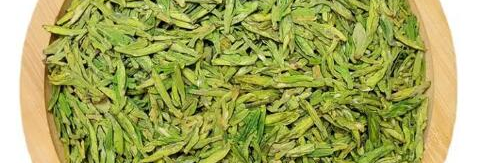cha sourcing's blog : The Green Tea Tapestry: Unraveling Bi Luo Chun and Longjing

In the verdant expanses of China’s tea fields, where tradition and nature intertwine, the story of green tea unfolds with delicate complexity. Among its many chapters, two names stand out with particular brightness: Bi Luo Chun and Longjing (Dragon Well). Both teas are revered for their exquisite quality and historical prestige, yet they diverge on a path marked by distinctive flavors, aromas, and cultural significances. This article delves into the heart of these differences, exploring how each tea captures the essence of its heritage and the nuances that define their places in the world of green tea.
Cultivation: The Root of Distinction
Bi Luo Chun, originating from the Dongting Mountain area of Jiangsu Province, is enveloped in the mists and moisture of its lakeside terroir. The tea’s name, meaning "Green Snail Spring," poetically reflects its appearance and harvest season. Bi Luo Chun is plucked early in spring, capturing the fresh vibrancy of the season. The unique cultivation method involves interplanting tea bushes with fruit trees, which is believed to impart the tea leaves with their characteristic fruity undertones and floral aroma.
Longjing, or Dragon Well, tea comes from the area around West Lake in Hangzhou, Zhejiang Province. This region is celebrated for its ideal tea-growing conditions, with nutrient-rich soil and a climate that nurtures the distinctive qualities of Longjing. The tea derives its name from the Dragon Well (Longjing) water source in Hangzhou, and it's famed for its meticulous hand-harvesting process, which selects only the tenderest leaves, contributing to its refined taste and flat, elegant leaf appearance.
Flavor Profiles: A Symphony of Sensations
The tasting experience of Bi Luo Chun is a delicate ballet of flavors, weaving together a tapestry of sweet, floral, and fruity notes. The tea's aroma is intoxicating, with hints of apricot, peach, and jasmine, reflecting the interplay between the tea bushes and fruit trees among which they grow. On the palate, Bi Luo Chun unfolds with a gentle sweetness and a slight vegetal quality, leading to a refreshingly smooth finish.
Longjing tea offers a different kind of refinement, characterized by its mellow and well-rounded nutty flavor profile. The taste of Longjing is cleaner and more straightforward, with a subtly sweet, chestnut-like undertone and a hint of vegetal crispness. The finish is long and pleasing, with a lingering aftertaste that refreshes the palate. Longjing's aroma is warmly inviting, with a soft, roasted quality that complements its taste.
Processing: The Craft Behind the Leaf
The processing methods for Bi Luo Chun and Longjing green teas are distinctive, each contributing to the teas' unique character. After plucking, Bi Luo Chun leaves undergo a meticulous hand-rolling process that shapes them into the tight spirals reminiscent of snail meat, from which its name is derived. This rolling method not only compacts the leaf but also enhances the tea's natural flavors, locking in the delicate aroma and taste.
Longjing tea’s processing is renowned for its ‘pan-firing’ technique, which stops the oxidation process almost immediately after the leaves are plucked. The skilled tea masters use large woks to hand-fire the leaves, pressing them flat against the sides of the wok. This method gives Longjing its distinctive flat shape and imparts a slight roasted flavor to the tea, distinguishing it from the more floral and fruity Bi Luo Chun.
Cultural and Aesthetic Appeal
Both Bi Luo Chun and Longjing teas hold esteemed places in Chinese tea culture, celebrated not only for their taste but also for their aesthetic beauty and the artistry involved in their production. Bi Luo Chun, with its delicate spirals and vibrant flavors, is often enjoyed in the tranquility of morning or early afternoon, serving as a gentle reminder of the rebirth of spring.
Longjing tea, with its serene, straightforward character and soothing aroma, is a staple for those seeking a moment of calm and clarity in their day. It is often associated with hospitality and leisure, reflecting its status as a tea that is both grounding and refreshing.
In Conclusion
Bi Luo Chun and Longjing green teas, each with their unique heritage, cultivation methods, and sensory profiles, stand as pillars of the green tea world. They offer not just a beverage, but a journey through the landscapes, traditions, and artisanal craftsmanship of China’s tea culture. Whether one is drawn to the sweet, complex notes of Bi Luo Chun or the refined, nutty smoothness of Longjing, both teas offer a rich tapestry of flavors and aromas that beckon the drinker to explore deeper into the art and soul of Chinese green tea.
In:

